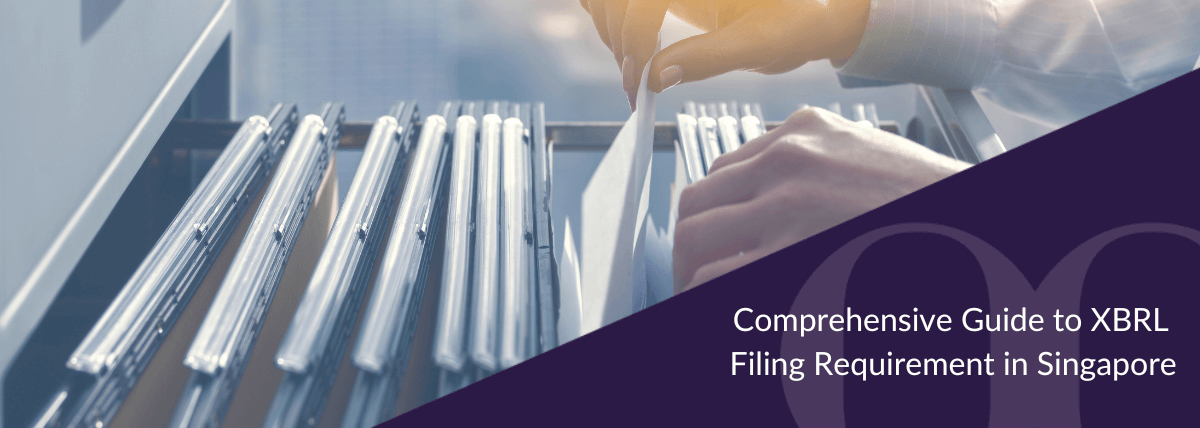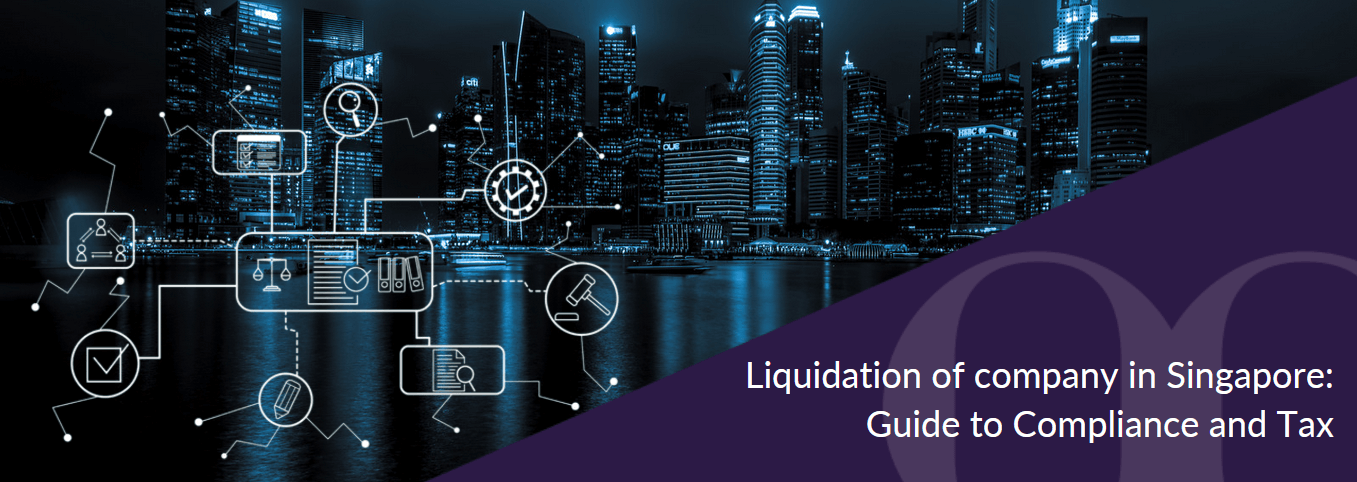The cessation of a Singapore company can occur for a range of reasons, such as changes in strategic direction, lack of profitability or legal issues. Factors like your company’s state of affairs, debt level, business goals and tax status can determine the method of closure.
Especially in the case of voluntary liquidation, having a good understanding of the tax implications of company closure can help business leaders to streamline the process, optimise the tax position of stakeholders and minimise compliance risk.
This article sheds light on the compliance and tax issues surrounding the liquidation of a company and provides valuable insights to help you optimise the process and safeguard the interests of all stakeholders.
What to know about closing a company in Singapore
The two main methods of closing a company in Singapore are striking off and liquidation (also referred to as winding up):
- Striking off – Private companies that are not actively in business and do not have any assets or liabilities may apply to the Accounting and Corporate Regulatory Authority (ACRA) to be struck off the register. Striking off is a relatively easy, fast and inexpensive process.
- Liquidation – This formal closure process involves an appointed liquidator who takes control of the company’s assets, business operations, and financial affairs. All bank accounts and assets are under the liquidator’s custody and the liquidator has the power to sell off (realise) the company’s assets, with the net proceeds used to pay off debts and liabilities. Any surplus cash is distributed to shareholders according to their rights and interests under the company’s constitution and Companies Act 1967.
The winding of a company may be either by Order of the Court or voluntary.
There are two types of voluntary winding up which are:
- a members’ voluntary winding up; or
- a creditors’ voluntary winding up.
A company’s solvency (its ability to pay its debts and liabilities within 12 months from winding up) will qualify for a members’ voluntary winding up.

The process of voluntary liquidation in Singapore
To comply with local regulations, Singapore businesses entering members’ voluntary liquidation will generally need to:
- Prepare a Declaration of Solvency – A majority of the directors must make a statutory Declaration of Solvency.
- Hold an extraordinary general meeting (EGM) – Shareholders need to pass a special resolution to wind up the company and approve a liquidator.
- Realise assets and distribute cash – The liquidator will take over the winding up process, using proceeds from the sale of assets to repay creditors in order of priority. Any excess money may be paid to shareholders and employees.
- Hold a final EGM – The EGM must be called by giving at least 30 days’ notice and the notice of EGM published in one English local newspaper and in the eGazette.
Please refer to the infographic “The process of voluntary liquidation in Singapore“ below for more details.
THE PROCESS OF VOLUNTARY LIQUIDATION IN SINGAPORE
A majority of the directors must make a statutory Declaration of Solvency, which annexes a statement of the estimated assets and liabilities of the company. The declaration must also show that as at the latest practicable date, at a meeting of the directors, in their opinion, the company shall be able to pay its debts in full within 12 months from the commencement of the winding up. The declaration has to be made within 5 weeks preceding the resolution to wind up and the declaration is filed with ACRA before the notice of the meeting to pass the winding up resolution is sent out.

Shareholders need to pass a special resolution to wind up the company and approve a liquidator. A copy of the resolution to wind up must be filed with ACRA within 7 days after it is passed and advertised in a local English newspaper within 10 days. The liquidator must, within 14 days after his appointment, file a notice of appointment with ACRA and the Official Receiver. The fact that the company is being wound up must be stated on every invoice, business letter or other correspondence of the Company. Then, directors’ powers will cease on the appointment of liquidator and the liquidator takes charge.

The liquidator will take over the winding up process, using proceeds from the sale of assets to repay creditors in order of priority. Any excess money may be paid to shareholders and employees.

The EGM must be called by giving at least 30 days’ notice and the notice of EGM published in one English local newspaper and in the eGazette. The liquidator will present to shareholders its final account of how the liquidation was conducted and payments were made. It must also lodge the account of the liquidator’s receipts and payments, and a statement of the position in the winding up with the Official Receiver. Within 7 days after filing the account and statement with the Official Receiver, the liquidator must file the account and statement with ACRA.

On the expiration of 3 months from lodgement of the accounts and the final return, the company is deemed dissolved. The books and documents of the company and of the liquidator shall be retained for a period of 5 years after the date of dissolution and may be destroyed at the expiration of the period.
The tax implications of liquidation of a company
Understanding the tax issues involved in company liquidation can help ensure a smooth winding up process that optimises financial outcomes and reduces compliance risk.
In the case of voluntary liquidation, key tax considerations include:
- Goods and services tax (GST) – Companies must fulfill all GST obligations, including settling any outstanding liabilities, claiming refunds, filing a final return and cancelling its GST registration.
- Corporate income tax – Companies must ensure all outstanding tax obligations are filed up to the date of liquidation and there are no outstanding tax liabilities. Any outstanding tax matters must be settled before completion of liquidation process.
- Tax losses and carry-forward – To utilise any unabsorbed tax losses brought forward, the company’s ultimate shareholders must remain substantially (50% or more) the same as at the relevant dates. Any remaining unabsorbed tax losses carried forward in the year of liquidation will be disregarded.
Updated rules for financial reporting during liquidation
Inland Revenue Authority of Singapore (IRAS) has recently updated its guidelines for financial reporting during the winding up of a company.
The Insolvency, Restructuring and Dissolution Act 2018 requires liquidators to prepare a declaration detailing the company’s receipts and payments for a period of 12 months after the date of liquidator’s appointment, and every subsequent period of 12 months.
With effect from 1 May 2021, liquidators can use the same 12-month period as their reporting period when preparing these declaration of receipts and payments. This means liquidators no longer need to split receipts and payments based on the calendar year when filing declaration with the IRAS, making for easier reporting.
Common tax pitfalls during liquidation
According to Ade Teo, Senior Manager of Regional Tax Services for BoardRoom Singapore, a common tax pitfall seen in company liquidation is inaccurate record keeping.
“Some companies do not maintain proper records,” she says.
“Companies without these documents may face challenges in substantiating deduction claims and revenue reporting during liquidation.”
This is why good record-keeping is important in every phase of the business lifecycle, from company incorporation to the end.
Companies with a history of non-compliance with tax filing obligations may face scrutiny from IRAS during liquidation. For companies that have failed to meet tax filing requirements, IRAS may issue chaser letters or impose late filing penalties.
Taking proactive steps to settle outstanding tax obligations will help ensure a seamless liquidation process.

How to optimise company liquidation in Singapore
Given the complex, time-consuming nature of members’ voluntary liquidation in Singapore, engaging a qualified corporate services team to act as your liquidator can be immensely beneficial. If you are unsure how to close a company in Singapore, a reputable firm specialising in corporate secretarial and tax services can help ensure a smooth, compliant process.
“At BoardRoom, our company secretarial and tax teams work closely together to ensure we obtain tax clearance in the shortest time frame,” says Eunice Hooi, Head of Corporate Secretarial for BoardRoom Singapore.
The company secretary’s role in Singapore liquidation includes supporting you with the following activities:
Meanwhile, tax professionals can help you navigate financial complexities and obtain any tax benefits you’re entitled to.
“It is very important to engage a liquidator who has a wealth of knowledge and knows what steps need to be taken at what point in time,” adds Eunice, who has been appointed as liquidator to support the clients’ members voluntary liquidations.
Having the support of a skilled, experienced corporate services team is especially important for the liquidation of a parent company, where multiple entities are involved.
Streamline the liquidation of your company
In the event that your business needs to close down, confidently navigating the tax issues and process of the liquidation of a company is of utmost importance.
For more than 60 years, BoardRoom has been providing expert liquidation guidance for Asia-Pacific companies of all sizes and industries. We can advise you on the members’ voluntary winding up and help ensure a tax-efficient closure that fully complies with local regulations.
To find out how our local business experts can assist with the liquidation of your company, please contact us.
Related Business Insights
-

08 Jul 2024
Your Guide to Corporate Tax Filing in Singapore
Learn to navigate corporate tax filing in Singapore effectively and ensure timely, compliant submissions with our c …
READ MORE -

14 Jun 2024
Comprehensive Guide to XBRL Filing Requirement in Singapore
Explore the essentials of XBRL filing in Singapore, covering mandatory requirements, benefits, preparation steps, a …
READ MORE -

11 Jun 2024
Corporate governance best practices at all levels of the company
Corporate governance goes beyond compliance, shaping the fabric of an organisation. Discover the corporate governan …
READ MORE

